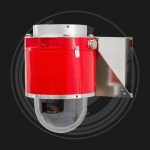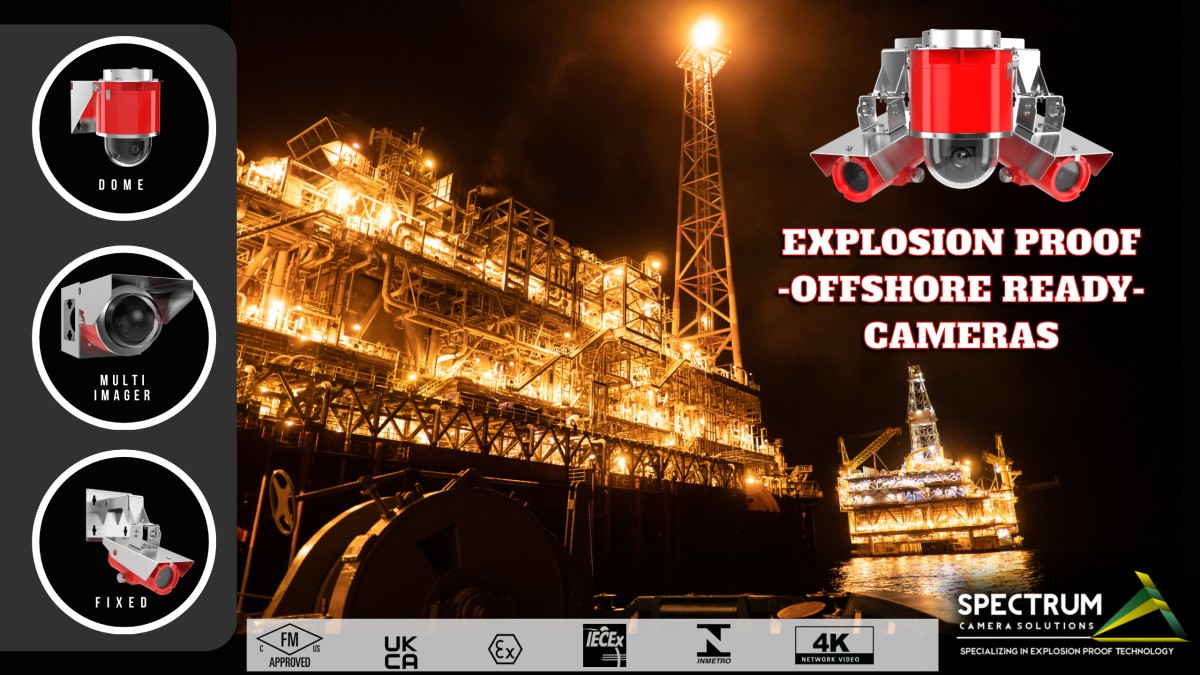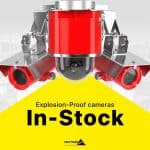The offshore oil and gas industry is known for its challenging and hazardous working environment. The combination of volatile hydrocarbons, high-pressure equipment, and harsh weather conditions makes it imperative to prioritize safety and monitor operations diligently. One essential component of ensuring safety and efficiency in offshore operations is the use of explosion-proof cameras. In this article, we’ll delve into why these specialized cameras are indispensable in the offshore oil and gas industry.
Safety in Hazardous Environments
Offshore oil and gas platforms are situated in environments where flammable gases and vapors are ever-present. Any source of ignition, even a minor spark, can lead to catastrophic explosions and fires. Explosion-proof cameras are designed to operate safely in such hazardous areas, significantly reducing the risk of ignition. This primary function is paramount in safeguarding the lives and well-being of personnel working on the platform.
Real-time Monitoring of Critical Areas
Explosion-proof cameras are strategically placed throughout offshore platforms to monitor critical areas. These cameras provide real-time footage of equipment, machinery, and process areas. By constantly observing these crucial zones, operators can promptly detect anomalies, equipment malfunctions, or safety hazards. Timely intervention can prevent potential accidents and maintain operational efficiency.
Supporting Incident Investigation
Accidents can happen even in the most stringent safety environments. In the unfortunate event of an incident, explosion-proof cameras serve as invaluable tools for post-incident investigations. The recorded footage helps experts analyze the sequence of events, identify root causes, and develop preventive measures for the future. This aids in improving safety protocols and preventing similar incidents from occurring again.
Remote Monitoring and Control
Modern offshore operations often involve remote monitoring and control from onshore facilities. Explosion-proof cameras are essential in enabling operators to maintain visibility in hazardous areas without endangering personnel on the platform. Remote monitoring allows for timely responses to potential issues, reducing the need for on-site personnel and enhancing overall safety.
Regulatory Compliance
Government and industry regulatory bodies, such as OSHA (Occupational Safety and Health Administration) and API (American Petroleum Institute), have strict safety guidelines and standards for offshore operations. The use of explosion-proof cameras is typically mandated to ensure compliance with these regulations. Failure to meet these safety requirements can result in severe penalties and, more importantly, jeopardize the well-being of the workforce.
Asset Protection
Offshore oil and gas platforms represent substantial investments in equipment and infrastructure. Explosion-proof cameras play a vital role in protecting these assets. They can monitor for unauthorized access, vandalism, or theft, helping to safeguard the considerable financial investments made in offshore operations.
Environmental Protection
In addition to safeguarding human life and property, explosion-proof cameras contribute to environmental protection. In the event of a spill or other environmental hazard, having video footage is critical for assessing the extent of the damage and planning effective cleanup efforts. Minimizing environmental impacts is a priority in offshore operations, and explosion-proof cameras play a crucial role in achieving this goal.
Conclusion
Explosion-proof cameras are not mere accessories; they are essential safety and operational tools in the offshore oil and gas industry. Their ability to function safely in hazardous environments, monitor critical areas, support incident investigations, enable remote monitoring, ensure regulatory compliance, protect assets, and contribute to environmental protection makes them indispensable. By investing in these specialized cameras, offshore operations can enhance safety, streamline processes, and ultimately reduce risks and costs associated with accidents and downtime. In this industry, where safety is paramount, explosion-proof cameras are a non-negotiable necessity.
The use of Spectrum Camera Solutions AI-enabled explosion-proof cameras (EX d Flame Proof) with NDAA compliant chips can further enhance process safety in offshore operations. By leveraging the power of artificial intelligence and secure microchips, these cameras offer real-time monitoring, predictive maintenance, and improved cybersecurity resilience. The ability to detect anomalies and potential hazards promptly allows for timely preventive actions and emergency response, safeguarding both personnel and critical infrastructure. As the industry continues to embrace cutting-edge technologies, the implementation of AI-enabled cameras with NDAA compliant chips is a crucial step towards mitigating risks and ensuring a safer and more secure future for oil and gas facilities.


About Spectrum Camera Solutions:
Spectrum Camera Solutions manufactures a full range of globally certified Explosion Proof cameras to monitor any hazardous area. Founded in 2012, Spectrum Camera Solutions has an unparalleled background as a world leader in hazardous-area vision systems featuring explosion-protected cameras. Our systems help monitor process areas, security, and safety, and our innovative Explosion Proof camera housings are made from durable materials and innovative engineering to ensure operational excellence in harsh environments.
Current manufacturers offered:
- Spectrum – Axis Explosion-Proof Camera
- Spectrum – Bosch Explosion-Proof Camera
- Spectrum – Avigilon Explosion-Proof Camera
- Spectrum – Motorola Explosion-Proof Camera
- Spectrum – Panasonic Explosion-Proof Camera
- Spectrum – Pelco Explosion-Proof Camera














